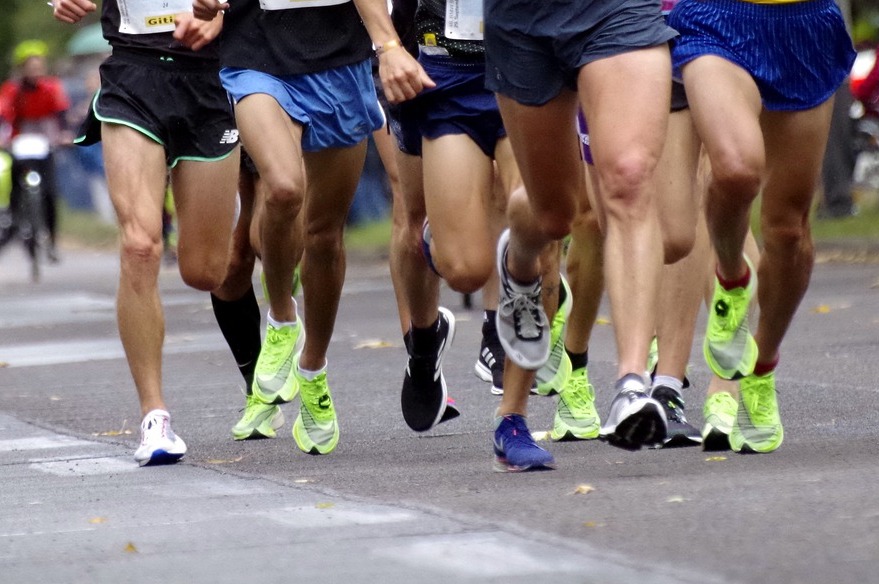The training is done. Now it’s just a case of counting down the days to the event. Maximise your chances of finishing the race within your target time by being fully prepared mentally and logistically.
Tapering
Approximately 2 weeks before the event, ideally you should start ‘tapering’.
What is tapering?
– You maintain the frequency of your runs, but you decrease the distance and effort.
– If you are running 3 times a week, still run 3 times a week but go shorter. Instead of a 10km run, maybe run 6km in taper week 1, then 4km in taper week 2.
– Reduce the effort of your runs – run slower and enjoy the scenery a bit more.
What is tapering not?
– You do not stop running completely – it’s important to keep your muscles active.
– You should not reduce the frequency of your runs. – It is not the time to put in a few ‘high effort’ runs or longer runs to achieve the distance.
Why?
Research shows (there’s plenty on the internet – Google it!) that tapering approximately 2 weeks before a half marathon is beneficial and improves your half marathon outcome.
Won’t I lose fitness and what if I haven’t run the full distance prior to the event?
You are unlikely to affect your overall fitness in the two weeks prior to the event. Now is not the time to be increasing your weekly mileage. Trust the science and ease off to allow your muscles to recover and be in optimum condition for the main event.
What if I get ‘twitchy’ during taper weeks and feel I just have to run?
You will still be running during these weeks – it’s important to – but just run slower, on flat routes. Leave the speed and hill sessions for after the event.
Carb loading
What is carb loading?
– Eating a high amount of carbs before a run event, the idea being that your body will have lots of readily available energy to draw on during the event.
Do I need to do it?
As with all science, there’s lots of information about it online but my personal view is that as amateur athletes, there is probably no need to carb load too much before an event – just eat healthily and maybe have a bit more pasta in the couple of days before. You risk feeling bloated and ‘heavy’ if you just eat pasta for the whole week before – after all your body doesn’t know it’s going to do a half marathon in 5 days’ time!
It’s probably advisable not to eat too much fat, fibre and protein (e.g. cheese, eggs, beans, berries, spicy foods) the night before or on the morning of the race, to avoid tummy problems (think Paula Radcliffe).
Just stick to foods that you are comfortable with and don’t introduce anything that you haven’t tried before.
Run gear
Race day is not the day to be putting on new trainers, or a new t-shirt or new anything! If you are running for a charity and are wearing their branded t-shirt, make sure you have it a couple of weeks ahead of the event so that you can get used to it. It may be perfectly fine, but you may find it rubs a bit, the shoulders slip off etc etc. You’ll have time to do something about it if you’ve tried it before.
Likewise trainers and socks. Don’t save your best trainers and socks for race day! Make sure you’ve been out in them on your longer runs and that you are comfortable in them. Trainers shouldn’t need ‘breaking in’ (they should be comfortable out of the box) but you do need to make sure they stay comfortable for a longer run. A small niggle after 5km could well turn into a debilitating blister by 18km.
Aches and pains 2 weeks before the event
In theory, and hopefully in practice, two weeks before the event you are at peak physical fitness ready to taper gently. This is when your mind can start playing tricks on you: my left calf is sore, my right glute is tight and so on. Trust your training and your body. Of course seek medical / physio advice if you are sure there is something wrong but mostly it will be a case of pre-race anxiety. Try and relax and think positively.
Top tips for race day – some are really obvious, but others may not be so!
| 1. Get everything ready the night before – it’s called a ‘flat lay’ where you lay everything out (flat!) that you are going to wear / take with you (some people even take a photo of it!). Although it’s a relatively late start time (check what time your race number colour starts), you don’t want to be rushing or panicking in the morning. Even fill out the emergency contact details on your race number and pin it on to your running vest (no one can ever find safety pins on the morning of an event). |
| 2. It may be chilly on the race day, and there’s normally quite a lot of hanging around at the starting point – you don’t want to get cold. Buy a cheap jumper / long sleeve top from a charity shop to wear from the point when you leave your bag (if you have one) at the storage area in the runners’ village and when you have warmed up once you have started running. You’ll warm up quickly when you get going and you can leave the charity top at the side of the road (or hand it to a random spectator!). Most events are prepared for this and scoop them up and give them back to charity. Just make sure your race number is visible as you go over the start line (roll up the jumper or take it off). |
| 3. Going to the loo: queues for the loos in the runners’ village are always long – especially the ladies – so start queueing early! You may need to go a couple of times – it’s the nerves – make sure you leave yourself enough time before heading to the start. Whilst there will be portable toilets on the run route, try to avoid needing the loo during the run (easier said than done!). |
| 4. On a similar note, ladies – think about your periods: make sure you are prepared, your body after all doesn’t know you are about to run 13.1 miles. |
| 5. Run as straight a line as possible. Try not to swerve unnecessarily around too many objects unless you are in danger of running into them! |
| 6. Take the inside line on bends. If you can, when you see a bend in the course, plan ahead and try to position yourself on the inside to run the shortest possible route (it’s not cheating, the race will be measured on the shortest possible route someone can take). |
| 7. It’s better to start slightly further up the field with the ‘faster’ finishers and let them overtake you, rather than having to overtake lots of slower runners. Don’t be put off by being overtaken. |
| 8. Don’t go out too fast. It’s natural: we’re excited, the adrenaline is sky-high and we just want to get out there. But again, trust your body and your training, start at the pace you want to maintain. It’s easier to speed up towards the end if you have something left in the tank, rather than to keep going if you’ve burnt out three-quarters of the way round. |
| 9. Drink before you’re thirsty. If you are carrying water, take small sips little and often. Beware of over-hydrating and either needing the loo or risking hyponatremia (too low sodium levels in your blood). |
| 10. Take electrolyte tablets / powders if you can, if you have tested them out before. There are loads on the market and not everyone has a good reaction to all of them! |
| 11. Likewise energy gels – they work for some people but not for others. Only use them if you have tried them before on long runs (personally for me it’s Maynard’s Wine Gums every time). |
| 12. Use any downhill sections to increase your pace – gravity is your friend. |
| 13. If you find yourself getting overwhelmed or anxious or doubting yourself during the race, try to focus on something to take your mind off it. For example, count lampposts (they are remarkably regularly spaced), focus on your out-breaths, count up to a hundred – anything to reframe your thinking, narrow your focus and stop being overwhelmed by the hugeness of the event and the effort required. |
| 14. It’s your run. If you are running with someone or get talking to someone on the run (it does happen!), don’t feel obliged to stick with them if they are going too slow or too fast for your pace. If you are running with a friend and start together, best to have a plan agreed if one of you wants to go ahead or drop back. You may of course run happily together for the whole distance but better to have the conversation before the event than after 10 miles, when it could be awkward. |
| 15. Absorb the energy of the crowd. People are there to cheer you on and they really want you to succeed. Channel their energy – high-five the children, wave and smile at people (without affecting your pace or technique of course!), look for your friends in the crowd. Call out to people if you see someone you know (it’s often easier for runners to spot spectators than the other way round). |
| 16. Remember why you are doing this: because you want to for yourself / your charity / someone you know. Hold on to that thought. |
| 17. Trust your training: you have trained for this, you can do it, it’s just another run! |
| 18. Finally, go out and enjoy it! |


